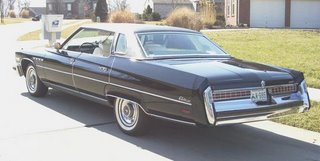
How Much High-Level Insider Info Do I Have?
Zero, zip, nada. I did work for GM for 14 years, starting in April, 1960 and ending with my resignation in April, 1975. I started in engineering and migrated to field service and marketing.
So here goes:
After my sophomore year in college I ran out of funds, and accepted a job with GM's Buick Division in Michigan. They needed a tech in their metallurgy lab which was right up my alley. In addition to salary, they would also pay for my tuition; a perfect marriage! So, for a short time, I was an "insider" albeit a low-level insider.
A Really Abbreviated History of GM
GM was started in the early 1900's by William (Billy) Durant who has been described by some as a P.T. Barnum-type huckster who was more of a dreamer than a businessman. He was smart enough however, to buy up shares of the small independent automakers and suppliers who were just beginning to emerge. Some of the nameplates he acquired are familiar; Chevrolet, headed by race car driver Louis Chevrolet, Buick, started by inventor David Buick, and Oldsmobile, headed up my Ransom E. Olds. Other companies, like The Oakland Car Company became Pontiac in later years, as did Reliance and Rapid Truck Companies which ended up as GMC Truck Division.
An interesting sidelight; Billy Durant approached his bankers in 1909 for $9.5 million to buy Ford Motor Company. He was turned down!
The corporation continued to buy up smaller manufacturers of various products that could be used in GM vehicles. Despite their growth, GM had no concrete direction until 1923 when Alfred P Sloan was elected president by GM's Board. Sloan was a finance man who had the vision to provide GM with the organization and direction it needed to become the largest automobile company in the world. One of his many innovations was to create separate car-building divisions and pit them against each other for sales and profit. Traditional marketing would have focused on non-GM companies like Ford, Nash, Hudson, or Packard, but Sloan didn't think they provided the level of competition he needed, so intra-divisional competition was introduced to the American business scene. That philosophy was still in place when I went to work for Buick. Our most "hated" competitor was Oldsmobile, not Mercury or DeSoto who were in the same price-class as Buick back then. It was interesting to say the least!
My Introduction To Corporate Ego At Work
Here are some examples of situations I encountered that caused me concern about GM's long-term direction.
Example 1: It was known that one of our luxury models had a serious fuel system problem. A small lead plug on the front of the big four-bbl carburetor would, on occasion, pop out at high temperatures and dump gasoline all over the front of the engine. If any of the ignition wiring was old or faulty, the presence of a spark would set the engine on fire. The fix was to make sure the plug was properly sealed by inspecting it when the car was in for routine service. But did they recall the cars for inspection? No. Our basic instruction was to "handle it under warranty." Huhhh? What happens if the fire destroyed the entire car? Answer again, "Fix it under warranty."
Did I ever sign a warranty claim for a complete car? Yes. Not only a whole new car but a set of expensive matching luggage for the owners, plus a set of custom golf clubs for the man and a new mink stole for the wife. All of their vacation goodies went up in flames while they were stranded on the interstate in a remote stretch of desert watching their car burn. I really expected to hear about the claim from a supervisor, but never did! Keep in mind I was only one of about 150 field representatives. I wish I knew how many of those warranty claims GM paid. Clearly, we were working with a bottomless pit of money.
Example 2: When I was a marketing manager in Los Angeles, I was asked to report weekly to Detroit about the competition we were encountering. At the time, VW Bugs were really becoming popular, and BMW and Mercedes were kicking our tails selling smaller, more fuel efficient cars. Quality was also becoming important and when the gasoline crisis hit in the late 70's, fuel economy became a huge issue. If our anticipated sales goals were not met, it was "politely suggested" by our superiors in Detroit that we were not competent, because big cars were really selling well in Chicago and New York. Frequently they would suggest that we could be transferred to choice districts like Fargo, ND, or Casper, WY, where our "talent" would be more useful to the corporation. Bottom line - big cars continued to be shipped to the West Coast in increasing numbers even though sales were decreasing.
Next Installment: Part II -Why Heads Were In The Sand
4 comments:
Wow, this is some great automotive history! I'll have to show this to Mark. I think he'll be very interested. Thanks for posting. :) Sounds like you've had a fascinating career ... careers.
Since I've started this, I realize that it will take more than two posts. My only concern is why there is a black Cadillac parked across the street with unsavory characters watching my house.
;-)
Whoa, whoa, wait... Cars aren't supposed to catch on fire or drink petrol like Irishmen drink whiskey?
In a word - No.
Post a Comment